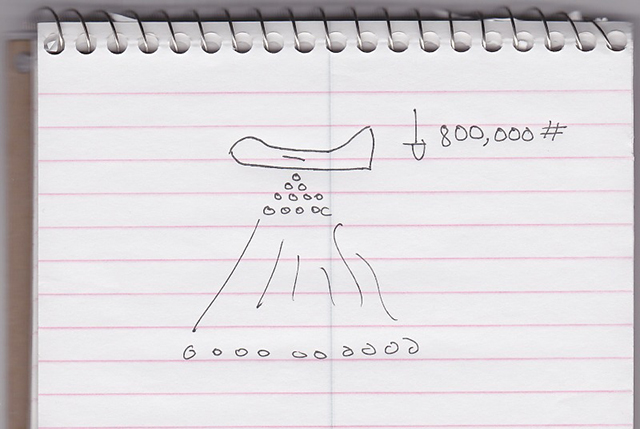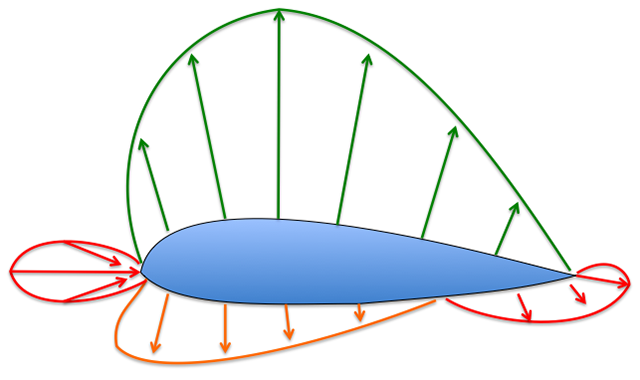As a Purdue Engineering graduate I think I have a firm grasp on engineering concepts, though I've never really made a living as an engineer. So maybe I get some stuff wrong. But even knowledge untempered by practical experience is better than no knowledge at all. I like to think engineers look at the world differently, and that view comes in handy when flying airplanes. . .
— James Albright

Updated:
2012-01-09
The most powerful person in any flying squadron is the scheduler, that much I knew. Lieutenant Colonel Alton Gee was the oldest lieutenant colonel in the United States Air Force, having earned his promotion on his seventh try. While he was just a navigator in an Air Force that placed pilots above all others, he controlled who flew and when in our very senior squadron. That he somehow befriended me was a stroke of good luck on my part.
“Jim-yoo-el,” he would say, “tell me what you know about rotary engines” or whatever topic interested him that day. Then we would talk for hours until he decided he had learned enough or that there was nothing to be gained from the knowledge I had. Sometimes I would sit in the next room with whatever pilot project I had at the time, and listened to him belittle another victim.
“Tell me this,” he said to the catch of the day, “if you have a lake with a non-permeable shore and no means of adding or subtracting water, and if you were sitting in a boat, and if I were to happen by the shore and threw in a rock, would the level of the lake go up, go down, or stay the same?”
The victim hemmed and hawed and Alton was not amused. “Come on Einstein,” he said, “you’re smart enough to fly a Boeing Friggin’ 747 you ought to be able to figure this out.”
“It would go up.”
“Very good,” he said with an exaggerated glee, “you got that right. Now, what if I handed that rock to you in the boat?”
“I don’t know,” the pilot said, “I don’t know much about boats.” The pilot fled and Alton was left without a victim.
“No use playing with you, Jimuel. Any engineer worth his salt knows this one.”
“Yup,” I said and pretended to ignore his invitation to spar.
We both left it there, content in our mutual smugness. Two months later, with me in the scheduling office seated next to him, Alton unleashed the same trap onto a new victim. “Higher,” the pilot said in answer to the 'hand you the rock’ portion of the quiz.
“Good,” Alton said with the same affected glee, “now does the level of the lake go higher if I hand you the rock or if I throw the rock into the lake?”
“The lake,” the pilot said, “it goes higher if you throw it in the lake because all of the rock is under water in that case.”
“Wrong!” Alton chortled, “The level goes up by the same amount. Displacement is displacement! I guess I can’t fault you because you aren’t a genuine Purdue graduate engineer like Captain Jimuel here.”
The pilot shrugged his shoulders and took off. Alton sat back in his chair, satisfied with the day’s belittle du jour. “Truth be known Jimuel,” Alton said, “I graduated with a degree in history. But I like engineering just like I was the real thing.”
“That explains it,” I said.
“What?”
“You got it wrong. The lake goes higher when you hand the rock to the person in the boat than if you were to throw it in.”
“No!” Alton said with even more joy, “I can’t believe a real engineer doesn’t know this. I guess we aren’t getting what we pay for when we send one of our boys to Purdue these days.”
“Displacement,” I said, “is not displacement. When you throw the rock into the lake, the displacement is equal to the volume of the rock. When you hand the rock to the person in the boat, the displacement becomes the volume of the air inside the boat equal to the weight of the rock, a much higher figure because the air is less dense.”
“Ah,” Alton said and then fell silent. In a minute he recovered. “That isn’t so.” He spent the next hour arguing with me, even drawing a picture or two.
But I wouldn’t budge. We parted that day in a bit of a funk, and I was off on a trip for two weeks. When I came back, I had a large pail of water, a ruler, a plastic cup, and a rock.
“Look here Alton,” I said while placing the pail on his desk. “We got exactly fifty millimeters of water with only the plastic cup on the surface.”
“That you do,” Alton said a bit suspiciously.
“Now I will put the rock in the cup first so I don’t remove any of the water trying to fish it out, okay?” He nodded. I placed the rock in the cup and we both saw the level rise. “What do you see there?”
“Looks like sixty-five,” he said.
“Yup,” I agreed, “I take the rock out of the cup and it returns to fifty.” We both saw the level return. “Now if I drop the rock into the pail, according to your theory, it will go back to sixty-five. But if I am right, the level will be less than that. Right?” He nodded again.
I dropped the rock and the level barely moved, maybe reaching fifty-three.
“Well I’ll be,” he said, “I’ve been using that puzzle for ten years and I was wrong. You know what this means Jimuel?”
“You owe me an apology?” I guessed.
“No,” he said, “you owe me another puzzle.”
We never spoke of the puzzle again and he never used it again. We still had our weekly debates and whenever I lost one he would say only, “you can always tell an engineer, you just can’t tell him much.” I sensed a loss of joy whenever he sunk his claws into a new pilot; the venom just wasn’t as potent.
One sunny day I was driving to the base when one of our 747’s flew right over me on its way to landing and the best puzzle of them all came to me.
“Alton,” I asked, “do you know what Isaac Newton said about action and reaction?”
“Of course,” he said, “for every action there is an equal and opposite reaction. Every private pilot knows that lift equals weight and thrust equals drag.”
“So back to your boat in the lake problem,” I said, “if the boat weighs a hundred pounds, what keeps it from sinking?”
“The lake,” he said without hesitation, “exerts one hundred pounds on the hull.”
“Okay,” I agreed, “so what keeps an airplane in the sky?”
“Lift, of course.”
“What is lift?”
He started to speak but then stopped.
“The 747 gets ready for takeoff,” I continued, “each one of its eighteen wheels combines to push down on the concrete with eight-hundred thousand pounds of weight. The concrete pushed back so the 747 stays put vertically. Now, the same airplane is cruising along, neither climbing or descending. What is pushing back to keep it from falling?”
“Air molecules!” he said happily, “each molecule underneath the aircraft shares the load and keeps the airplane airborne.”
“So what keeps these air molecules from falling?”
Alton stroked his chin for a minute, but then he had it. “The molecules under the wings are exerting downward pressure on the molecules below them which in turn do the same to the molecules below them all the way down to the ground.”
“So the 747 is flying along and passes right over you, flesh and blood.” I paused while he listened. “Why aren’t you crushed to death?”
He didn’t have an answer. I drew him a picture.
“Just like grains of sand,” I said, “each grain doesn’t sit directly above another grain, but several. They share the load. By the time the series of molecules gets to the ground, there are millions of them sharing the load. That’s why you aren’t crushed.”
He grinned with recognition, “very good Jimuel.”
“You now have another puzzle worthy of confounding whomever walks in your door.”
“Nah,” he said, “nobody’s gonna understand it.” He shook his head in pity for me. “You can always tell an engineer, you just can’t tell him much.”
Postscript
Years later I was working for a software company filled with exceptional engineers — engineers who earned their livings as engineers, not "wannabes" like me — but my reputation as a pilot / engineer somehow translated to engineer / pilot. The real engineers would sometimes talk to me as a peer. (Which made me very happy.)
"Tell me something about airplanes and engineering that I can never figure out," the top engineer in the company asked while we waited for the CEO in a meeting for us both. I gave him the same story that I had given Alton to about the same effect.
"I don't think that is right," he said about my pyramid of air molecules, "but I don't know the answer either. Let me think about it." He never came up with a better explanation.
That made me rethink my answer and the correct answer, I think, finally came to me. It was obvious looking at a diagram of pressures about an airfoil in motion. The arrows indicate positive pressures about an airfoil in a wind tunnel, as found using precise gauges along the surfaces. Without a the weight of the aircraft pushing down, the wing generates a vacuum on top and bottom, but a greater vacuum on top. The answer, I believe, is the aircraft is actually "sucked" upward, not pushed upward. You can always tell an engineer, you just can't tell them much.



